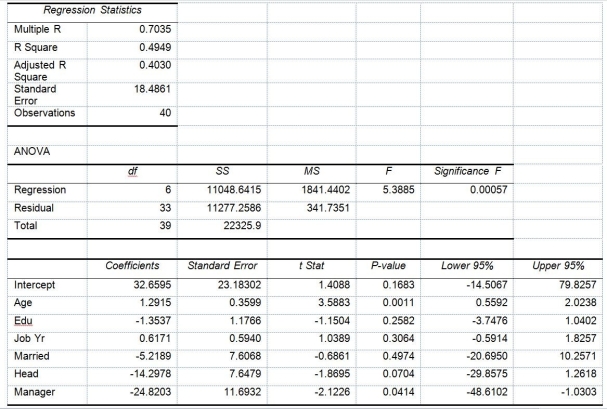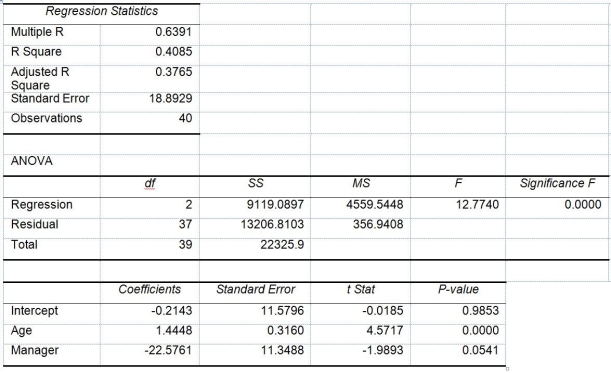TABLE 14-17


Model 2 is the regression analysis where the dependent variable is Unemploy and the independent variables are
Age and Manager. The results of the regression analysis are given below:

-Referring to Table 14-17 Model 1, we can conclude that, holding constant the effect of the other independent variables, there is a difference in the mean number of weeks a worker is unemployed due to a layoff between a worker who is married and one who is not at a 5% level of significance if we use only the information of the 95% confidence interval estimate for β₄.
Definitions:
Internal Accounting Records
Documents and ledgers used within an organization to track financial transactions, operational data, and other key financial information.
Equity Method
An accounting technique used to record investments in other companies, where the investment is initially recorded at cost and subsequently adjusted to reflect the investor's share of the investee's net income or losses.
Equity Income
Income that comes from owning shares in a company, typically in the form of dividends paid out from the company's profits.
Internal Accounting Records
Documentation and books kept by an organization for its internal financial planning, monitoring, and reporting.
Q5: If a time series does not exhibit
Q26: Referring to Table 15-1,what is the p-value
Q37: Referring to Table 15-6,the variable X₄ should
Q51: Which of the following will not change
Q58: Referring to Table 16-5,the number of arrivals
Q58: Referring to Table 13-3,the director of cooperative
Q59: The p chart is a control chart
Q85: Referring to Table 16-5,the number of arrivals
Q94: Referring to Table 15-4,which of the following
Q232: Referring to Table 14-17 Model 1,there is